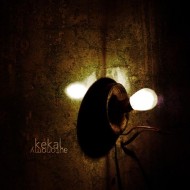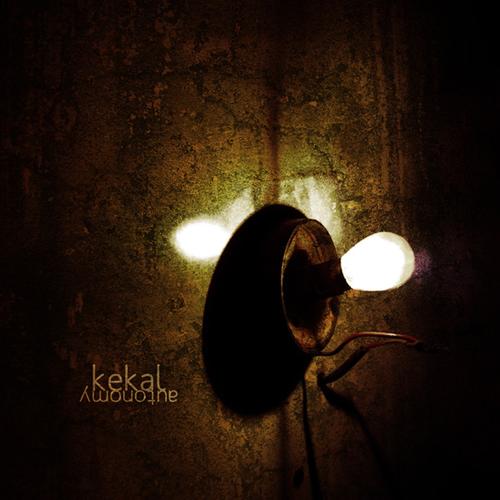 I sat bolt upright and took notice. This is the strange and remarkable world of Kekal, the band from Indonesia who have existed since 1995, have released nine albums and yet have no members after they all left in 2009. In spite of this, the old members have rallied round and “supply their artistic output”.
I sat bolt upright and took notice. This is the strange and remarkable world of Kekal, the band from Indonesia who have existed since 1995, have released nine albums and yet have no members after they all left in 2009. In spite of this, the old members have rallied round and “supply their artistic output”.
But onto the music. “Rare Earth Elements” woke me up from my dreary existence. What is this? Let’s have a go. There are elements of Kraftwerk (Boing-Boom-Tschak), electronic, dark techno, industrial, experimental, avant-garde, progressive with some metal in there Kekal started as an extreme metal band with black and death tendencies. Who knows what it is? But I’ll tell you what. “Rare Earth Elements” is a vivid, multi-coloured and exaggerated piece of darkness with disturbing undercurrents. This album is about atmospheres, sometimes outgoing, and much of it introspective, and all, as they say themselves, “carefully crafted and anxiously delivered”.
The electronic experimentalism continues. Boundaries are surpassed with further mind-bending explorations of the subconscious. This is totally original. Sound ceases to be just sound. Instead sound reflects and transforms into a series of images. Echoing bubbles rise calmly above a dark buzzing noise on ‘I Go Ahead and Feel the Pain”. It’s the ripple of waves, but there is a further electronic sub-text which is located somewhere between an industrial process, the bowels of the earth and the cosmos. It’s strangely hypnotic. It’s strange indeed. It’s very dark and gloomy now.
A distorted guitar riff starts off “Disposable Man”. A deep-voiced man speaks. A black metal sub-current stands behind a distantly disturbed vocalist. In spite of the seemingly statutory abnormality, there is great emotional power. The pace and mood are set by a steady drum and guitar line. The deep, synthesised voice returns, signalling the return to the musical weirdness. Yet it bursts still with emotion. Amazing. The songs in themselves contain enormous feeling but they’re reinforced and even dominated by this strange ambiance. “Swings of All Moods” then has a strong post-metal section before launching into a barely recognisable form of industrial metal. “Kekal” means “permanent” in Malay, but there’s nothing permanent about this. There’s always a surprise round the corner. Here it comes now in the form of distorted eastern-style metal rhythms. It stops and there are sound waves. It’s like listening to a recorded version of the mind’s machinations, but it’s a mind which is breaking down.
“Indonesanity” evokes images of a journey across a barren landscape. It is a short interlude. “Futuride” starts like a disturbed electronic version of “The Wall”. The singer’s railings match the insane tone of this futuristic march. There’s an element of Ephel Duath in the jazzy progression. But the drum beats on as the stifled guitar plays another tune. Electronic and industrial lunacy intervenes. Even Haken haven’t thought of this merriment. They’re not insane enough. Repetition leads to strangeness and that lovely pattering drum beat. This is the height of avant-garde experimentalism. A dark and expanding journey threatens to move in. The exquisite “Playground” is lush but extra-terrestrial too, judging by the strange bleeps. It’s now like a whole vacant world sweeping in front of our eyes. As it develops, the melancholy hits us. Kekal’s atmospheres are not to be underestimated. “Playground” gets darker and more industrial. It is huge. The scene moves on as “iComa” is dominated by its hypnotic and exotic drum patterns. The customary void-like sounds continue in the background. Then, for the first time there’s a hint of classic metal but the song is distant and as ever the vocalist is on another planet. Bang … crash … the world’s roof is caving in. But while it sounds like a metal song which has gone wrong, there’s the most delicate, and unexpectedly heart-rending guitar line: absolutely brilliant. Kekal seem to be capable of pulling out atmospheric guitar sections which surpass anything you’ve heard. “iComa” descends into industrial chaos. There’s another nice ending from the guitarist. It stops, and “Space between Spaces” begins like a heart monitor, beating constantly. The guitar clangs in the background. A dark and morbid pattern develops. It is rich and suggestive, just as the vocals are tortured and melancholic. The heart beat continues slowly and gloomily. Then the shuddering beat strengthens and there is added power. The vocalist chants the message of the last track like a mantra: “Learning to love the future, learning to love the change”. The walls are trembling now. It is very sinister. It is very atmospheric.
This album combines constancy and lush passages with large outpourings of gloom. Above all, it never stands still. It is not entirely cohesive but then it never will be with its level of complexity, layers and extreme experimentation. This is a work of vivid imagination and amazing ambiance, achieved through electronic and metal instrumental touches and distortions. “Autonomy” is as original and amazing an album as you’ll hear.
(8.5/10 Andrew Doherty)

Leave a Reply